Tech Specs Demystified
When shopping for a new laptop, understanding the technical specifications can be overwhelming. This guide will break down the key components and features, helping you make an informed decision.
Understanding Processors

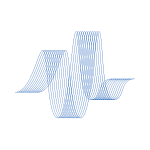
Clock Speed:
Measured in GHz, a higher clock speed indicates a faster processor. However, efficiency and architecture improvements also play a role in performance.

Brands and Models:
Intel and AMD are the main players. Intel’s Core i3, i5, i7, and i9 cater to different needs, while AMD’s Ryzen series offers competitive performance, often at a lower cost.
The Importance of RAM
RAM (Random Access Memory) plays a vital role in a laptop’s performance, particularly for multitasking and running memory-intensive applications. Here’s a deeper dive into why RAM is so crucial:
Key Considerations:

Capacity:
The amount of RAM directly affects how many applications you can run simultaneously without experiencing slowdowns. For basic tasks like web browsing and word processing, 4GB might suffice. However, 8GB is the standard for general use, offering smoother performance for everyday multitasking. For power users who run demanding software, such as video editing or 3D rendering programs, 16GB or more is recommended.

Speed and Type:
RAM speed, measured in MHz, influences how quickly data can be read from or written to memory. Faster RAM speeds can improve overall system performance, particularly in memory-intensive applications. DDR4 is the current standard, offering a good balance between speed and energy efficiency. DDR5 is emerging in newer systems, providing even higher speeds and better performance.
SSD vs. HDD: Storage Explained
The type of storage your laptop uses can significantly affect its performance and overall user experience.
Key Considerations:

SSD (Solid State Drive):
Offers faster boot times, quicker data access, and better overall performance. SSDs are more expensive per GB but provide a significant speed advantage.

HDD (Hard Disk Drive):
Provides more storage at a lower cost but is slower and less durable. HDDs are suitable for bulk storage of files that don’t require fast access.

Hybrid Solutions:
Combines the large storage capacity of an HDD with the speed advantages of an SSD. It uses a small amount of solid-state storage to cache frequently accessed data, offering a balance between speed and capacity.
Graphics Cards: What You Need to Know
The graphics card, or GPU (Graphics Processing Unit), is essential for tasks that require rendering graphics, such as gaming, video editing, and 3D modeling.
Key Considerations:

Integrated vs. Dedicated:
Integrated GPUs are built into the CPU and suitable for general use, while dedicated GPUs offer superior performance for gaming and professional applications.

Key Players:
NVIDIA and AMD are the main GPU manufacturers. NVIDIA’s GeForce GTX and RTX series are popular for gaming, while AMD’s Radeon RX series offers competitive alternatives.

VRAM:
he amount of dedicated memory on a GPU. More VRAM allows for higher resolution textures and better performance in complex scenes. For gaming, 4GB is a good starting point, with 6GB or more recommended for high-end gaming and professional applications.
Display Technologies
The laptop display is crucial for both work and entertainment.
Key Considerations:
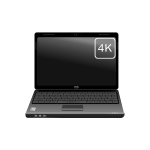
Resolution:
Standard resolution offering clear and sharp visuals, suitable for most tasks. 4K Provides superior detail and clarity, ideal for video editing, graphic design, and high-quality media consumption.

Panel Types:
TN (Twisted Nematic):
Known for fast response times, making them suitable for gaming, but with poorer colour accuracy and viewing angles.
IPS (In-Plane Switching):
Offers better colour reproduction and wide viewing angles, ideal for creative professionals and general use.
OLED (Organic Light-Emitting Diode):
Exceptional colour and contrast with true blacks, suitable for high-end media consumption and creative work. More expensive and can suffer from burn-in.
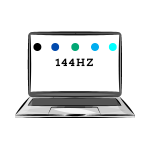
Refresh Rate:
Higher refresh rates (120Hz, 144Hz, or higher) provide smoother motion, which is beneficial for gaming and video editing. A standard laptop usually has a 60Hz refresh rate.
Battery Life and Power Management
Battery life is crucial for users who need to work on the go.
Key Considerations:

Capacity:
Measured in Watt-hours (Wh) or milliamp-hours (mAh). A higher capacity generally means longer battery life.

Power Efficiency:
Efficient components, such as low-power processors and integrated graphics, can extend battery life. Software optimisation also plays a role, with features like dark mode and power-saving settings.

Charging Speed:
Fast charging capabilities allow for quicker recharges, which is a significant convenience for mobile users. USB-C charging is becoming more common, offering flexibility and faster charging rates.
Connectivity and Ports
A variety of ports and connectivity options ensure your laptop can connect to peripherals and networks.
Key Considerations:

USB Ports:
Multiple USB-A and USB-C ports offer flexibility. USB-C is becoming standard for its versatility and support for charging, data transfer, and display output.

Thunderbolt 3/4:
Provides high-speed data transfer and support for multiple monitors and external GPUs.

HDMI/DisplayPort:
Essential for connecting to external monitors and TVs. HDMI is more common, while DisplayPort supports higher resolutions and refresh rates.

Wi-Fi and Bluetooth:
Wi-Fi 6 (802.11ax) offers faster speeds and better performance in crowded environments compared to Wi-Fi 5 (802.11ac). Bluetooth 5.0 and above provide improved range and data transfer speeds, useful for connecting wireless peripherals.
Cooling Systems and Thermal Management
Efficient cooling is essential for maintaining performance and longevity, especially in high-performance laptops.
Key Considerations:

Active vs. Passive Cooling:
Active Cooling: Utilises fans to dissipate heat. More effective but can be noisy. Necessary for gaming laptops and workstations.
Passive Cooling: Uses heat sinks and natural airflow without fans. Quieter but less effective, suitable for ultrabooks and low-power laptops.
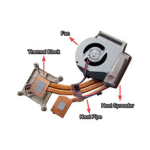
Heat Pipes and Vents:
Heat Pipes: Transfer heat from hot components to areas with better airflow, enhancing cooling efficiency.
Liquid Cooling: Found in high-end gaming laptops, offering superior cooling by circulating liquid through the system.
Vapour Chambers: Similar to heat pipes but more efficient, distributing heat evenly across a larger surface area.

Software Controls:
Some laptops offer software to adjust fan speeds and thermal profiles, balancing performance and noise.
Audio and Sound Quality
Good audio quality enhances the multimedia experience, whether watching movies, listening to music, or making video calls.
Key Considerations:
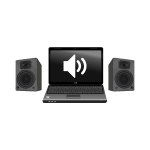
Speakers:
Quality and placement affect the sound experience. Look for laptops with branded audio systems (e.g., Harman Kardon, Bang & Olufsen) for better sound quality.

Headphone Jack:
Ensure the laptop includes a quality headphone jack if you use wired headphones. High-impedance headphones may require an external amplifier for optimal performance.

Microphone Quality:
Dual-array microphones offer better noise cancellation and clarity, essential for video conferencing and voice recording. Look for features like noise reduction and echo cancellation.
Understanding these tech specs will help you choose a laptop that meets your needs and ensures a satisfying user experience. Whether you prioritise performance, portability, or specific features, this guide will equip you with the knowledge to make an informed decision.




